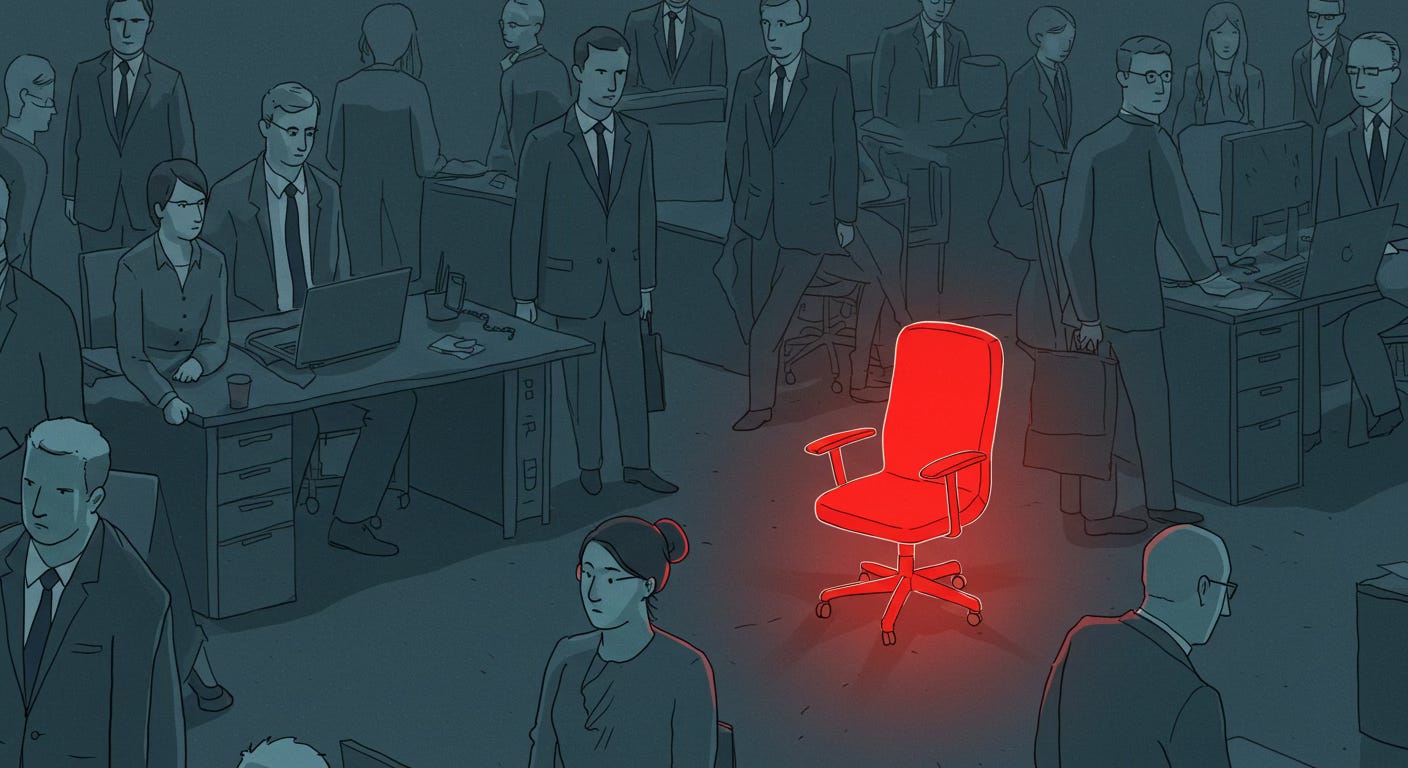It’s easy to lose your best people as your business grows. I’ve seen it myself. When the pressure ramps up, it’s tempting to think retention is about salary bumps or extra perks. But that’s rarely the truth.
What really keeps people is harder to measure. And in the chaos of scaling, those are the first things to slip. The story that once fired everyone up gets lost in slide decks. The problems that stretched people turn into endless queues. The autonomy that gave people energy is buried under process.
That’s why I asked William Meller, consultant and author of Decoding Digital Leadership, to break down the deeper drivers of retention. He goes past surface fixes and shows what ambitious people need to stay engaged and committed. 👇🏻
— Millennial Masters is sponsored by Jolt ⚡️ Reliable hosting for modern builders
The departure that said everything

It started with a Slack message on a Tuesday morning: “Can we talk?”
Over coffee, the employee looked drained. No small talk. “I’m leaving,” he said. And then the line every leader dreads: “It’s not about money.”
Six months earlier, he had been the model hire. He spoke about the mission with pride, telling friends they were building something that made decisions easier and lives simpler. He believed it.
But purpose slipped away. All-hands turned from users to charts. Conversations about meaning became slide decks. The work was still happening, but the reason for it was harder to see.
Challenge went next. At first, the job stretched him: tackling latency problems, mentoring juniors, losing himself in problems that needed real focus. Then the company grew, meetings multiplied, approvals stacked up. Projects that could have reignited him died in queues.
Finally, ownership disappeared. In the early days, he deployed on Fridays and owned the results. Autonomy made him feel trusted, like a founder inside the company. As layers of sign-off arrived, that freedom vanished. Work shrank. So did his agency.
In his exit chat, he blamed no one person. He blamed the structure: a company that had scaled fast, lost its story, traded meaningful work for safe work, and taught its best people it was better to wait than to build.
Asked what would have kept him, he didn’t hesitate: a reason to care, a challenge worth the effort, and the keys to make decisions. Purpose, challenge, ownership. He finished his coffee, handed back his laptop that Friday, and walked away. The problems he named stayed behind.
Why people really leave
What employees rarely mention when they leave is salary, perks, or titles. Leaders reach for these because they are easy to measure, but they miss where the real cracks form. Retention usually come down to three conditions: purpose, challenge, and ownership.
1️⃣ Purpose
Research from McKinsey shows that employees with a strong sense of purpose at work are almost twice as engaged. Viktor Frankl made the case long ago that humans can endure extreme pressure if they believe in the meaning behind it. In high-growth startups this becomes vital.
People tolerate chaos and intensity when they see what they are working toward. When leaders stop reinforcing the mission, or swap it for financial targets disconnected from users, the energy drains quickly. Even high pay cannot replace the absence of purpose.
2️⃣ Challenge
Mihaly Csikszentmihalyi’s work on flow shows that people thrive when their skills are stretched but not broken. Talented employees do their best work when solving problems just out of reach, because those problems fuel growth as well as satisfaction.
Startups naturally create this environment in the early stages. As they grow, layers of process begin to suffocate it. Instead of being absorbed in solving difficult problems, high performers spend time reporting on them or waiting for approvals. What once felt energising becomes numbing.
3️⃣ Ownership
Studies on intrapreneurship show that people who are trusted to make decisions act differently. They take risks, learn faster, and invest more of themselves in outcomes. That trust is fragile. Once decisions are centralised, employees stop acting like owners. They still show up, but their initiative stays outside the room.
These three conditions form the foundation of retention. Remove one and the structure weakens. Remove two and it collapses.
Retention is not written in a policy; it is lived in whether the daily work feels meaningful, stretching, and within the hands of the person doing it.
Startups attract ambitious people with a simple promise: purpose, challenge, and ownership. Early on, that promise feels real. Every feature matters, every release feels like a bet, and everyone holds the keys.
The trap comes with scale. Investors want predictability, processes multiply, and leaders chase safety. In trying to manage risk, they strip away autonomy. Meetings crowd out experiments, metrics replace meaning, and bureaucracy smothers challenge. The conditions that once pulled the best people in are the very ones that drive them out.
The real work of leadership
Loyalty is not secured with perks or pay. The best people stay because they find meaning in the work, space to grow, and trust in their leaders. Remove those and they leave quickly.
Retention is also not about avoiding problems. It comes from the presence of energisers: work that matters, challenges that stretch ability, and decisions that shape outcomes.
Without these, even generous compensation won’t stop talent from leaving. Gallup estimates voluntary turnover costs US companies around a trillion dollars every year, most of it from people who could have been kept with a better environment.
Culture is lived in the small moments, and people are always watching.
A leader who explains the mission in a quick conversation does more for engagement than an HR initiative. A manager who hands genuine responsibility to a junior employee does more for ownership than any policy. People notice these signals, and they add up.
If leaders understand this, they can scale without losing the conditions that make startups attractive. It requires discipline to resist the drift toward bureaucracy, and humility to remember that talent does not stay for you, it stays for the environment you help create.
Make work worth staying for
Retention is a leadership responsibility, shaped by how daily work feels on the ground.
Leaders must connect the dots between tasks and the bigger mission. A product manager showing how a feature reduces wasted time for users isn’t delivering platitudes, but reminds the team why their work matters.
They must also calibrate challenge like a coach setting training loads. Too light and people coast, too heavy and they burn out. Stretch projects and smart rotations keep talent engaged without breaking them.
And they must push decisions downward. Trust is the foundation. When someone takes an idea from start to finish, they feel real ownership. Even failed experiments prove the culture values initiative.
These small choices add up. Casual remarks, quick chats, and how leaders respond in the moment broadcast more than any policy. Culture is lived in these signals, and people decide whether to stay based on them.
The truth every exit reveals
The employee who left was not unusual. He just voiced what many others keep to themselves.
People rarely walk away because of pay. They walk because the environment no longer gives them meaning, growth, or trust.
Leaders shape that environment every day in the stories they tell, the problems they prioritise, and the control they either share or hoard. Those choices decide whether talent feels anchored or alienated.
The real test is simple: can your best people say, “I know why I’m here, I’m stretched in the right way, and I have the freedom to act”?
If not, you already know how the story ends.
👤 About William Meller
William writes Decoding Digital Leadership, a newsletter that helps founders and managers navigate the realities of leading in fast-moving environments.
He’s an award-winning consultant and IT/Digital Manager with global experience across industries and cultures, from Brazil to Sweden. A PMI Future 50 Leader and Under 35 Changemaker, he brings both strategic expertise and hands-on leadership to complex projects.
What drives him is simple: helping people grow into confident leaders who know why they’re here, what they’re building, and how to make it matter.
More on leadership from Millennial Masters:









Great article. The best leaders create cultures where people can thrive and don't want to leave.